How to Write a Testimonial for a Friend
Customer testimonials are a powerful tool that every brand should be using to showcase how their products or services have improved their clients' lives.
No matter how compelling your copy, how well-edited your photos, or how glamourous your videos might be, all other marketing pales into insignificance compared to testimonials and reviews.
Whether you're shopping for the best type of hiking boots, interior decorating tips, or a new favorite restaurant, chances are you'll turn to review sites to find the option with the most 5-star reviews and customer recommendations.
Social proof is a natural part of life and one that marketers have been able to utilize far more since the internet and smartphones took over how we do everything from communication to making decisions on where to eat.
Customer testimonials are a beneficial type of social proof: they tell potential new customers about the successes and triumphs others have experienced when using your products or services. And because these are real people, customers trust them to be unbiased and truthful.
What is a testimonial?
A testimonial is effectively a review or recommendation from a client, letting other people know how your products or services benefitted them. Customer testimonials can take multiple forms, but the goal is always the same: to showcase how great your brand is.

Customer testimonials are more effective than paid marketing copy as they take the spotlight away from the seller to shine it on the customers.
Anyone looking at your testimonials page can see things from a like-minded point of view, as all of your current and previous clients were once potential customers, just like them.
Seeing how the decision to go ahead with your services benefitted others in their same shoes is an excellent way to provide a real-life application to whatever you're offering.

To bring this home, studies have found that approximately 92% of people will read customer testimonials when considering a purchase, and an additional 88% state they trust online reviews just as much as they believe a recommendation from a friend or family member.
If 92% of people are looking for testimonial examples of social proof to help them make purchase decisions, it's clear that quality testimonials pages can increase conversions and improve your brand image.
How to write a good testimonial
The best customer testimonials can be incredibly wide-ranging in format, length, and content… But there are a few aspects that all types of testimonials have in common.
Firstly, they answer four key questions:
- What was the problem your client has?
- How did your products/services solve the client's problem?
- What makes your solution unique?
- Did they have a positive experience with your brand?
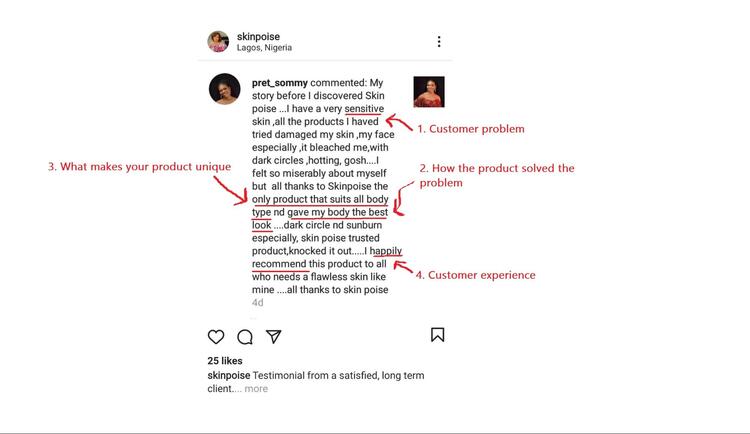
Answering these questions in a testimonial is crucial for establishing social proof and provides an example of how your product can get the client where they want to be.
Firstly, it provides a problem-solution process that new clients are likely looking for.
Secondly, it emphasizes your unique selling point (USP) and highlights how your company is better than any others.
Finally, having previous customers clearly state that they had a positive experience with you and/or would recommend you in the future leaves your future customers feeling happy and confident that you are someone they want to work with.
How long should a testimonial be?
How long is a piece of string?
Different types of testimonials will vary in length. Good content marketing professionals will use a selection of quotes, videos, blogs, and case study testimonials to build up a story of success.
That said, when it comes to landing pages, popups, and even emails, shorter testimonials tend to be more effective. Ideally, you'll want to be writing quote testimonials of 50 words or less. Video page testimonials should be a few minutes long to provide an example of a problem-solution-relationship, without too much waffle.
Pro Tip: If you have longer testimonials, highlight the most essential keywords in bold to guide the reader's attention.
Testimonials are best when they're direct and to the point. Be sure to use words and phrases that your potential customers can relate to, and bring everything back to the clients' hopes and fears: why they came to you, exactly what you can do for them, and dispel anything that might be holding them back.

A good testimonial will reassure a customer – quickly – that you have the solution to their problem.
What should a testimonial include?
While studies have shown customers definitely trust and even rely upon testimonials, that doesn't mean they blindly follow faceless claims of success. The more information you can attribute to a testimonial, the more credible and therefore trustworthy it will become.
The best testimonials will include the writer's name, title, company, and image.
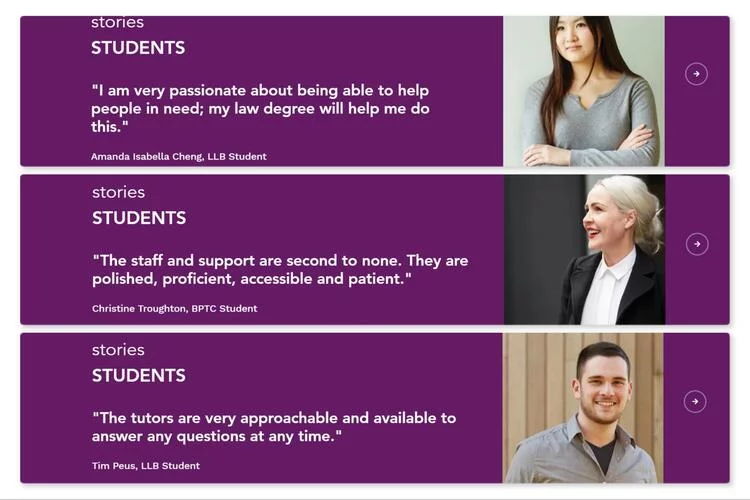
Putting a face to your customer testimonials is arguably the most effective bit of content marketing you can do. In fact, Highrise ran an A/B test where they replaced their fairly generic landing page with a happy, sampling person and saw a 102.5% increase in conversions! So, there's clearly something about faces that we humans like.
If your testimonial is from a high-profile company, using a company logo can also help illustrate the review's credibility. This also offers an extra benefit of being free publicity for the customer writing the testimonial: win/win.
That said, remember the "right of publicity" makes it illegal to use someone's name or likeness for publicity without their consent, so you must ask before publishing personal details alongside a customer testimonial.

However, if someone isn't happy with you using their full name, they might consent to their initials being used.
How to make a testimonial sound authentic
The best testimonials are authentic. This is not a place for copywriters to fake it 'till you make it… Your customer testimonials should be just that: from the customer. There are other places your copywriting can shine.
Don't waste your time trying to mimic an authentic customer review; your readers will be able to see through this.
Where should I put testimonials?
While most brands and websites offer a 'customer testimonials' page (perhaps with some variation on the title), this definitely should not be the only place you quote testimonials!
The problem with testimonial pages is that they (quite understandably) stink of marketing.
People expect testimonial pages to be little more than a sales pitch. And while everyone wants to see what previous customers think of your services, they don't want to feel force-fed something that might not be as authentic as you think it is.
The best place to put customer testimonials is wherever your customers are looking.
Use the analytics from your website host to see which pages customers are clicking on and where they're hovering, then put appropriate testimonials there. This provides a relevant, engaging, real-life example of how that exact feature or product helped someone.
And don't forget to include a powerful call to action along with the reference!
Put testimonials somewhere relevant.
It's important when building testimonial landing pages that your testimonials make sense. For example, there's little point in a customer raving about how fast your delivery times are when the landing page is talking about the quality of your materials.
Linking the testimonials to the topic is the secret to success when it comes to using testimonials wisely.
The very best testimonials should also take pride of place on your homepage and About-Us page, ready to catch the eyes of all your potential customers right from the offset.
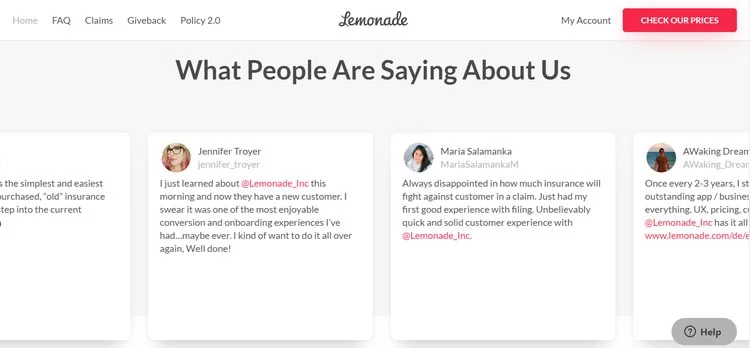
How to request a customer testimonial
Now you know what a testimonial is, what makes a good one, and where to put it, it's time to figure out how to get testimonials to feature on your website.
Testimonials aren't the sort of thing you should ever be faking. Not only is this a terrible example of false advertising, but people can smell a fake testimonial a mile away. You'll do far better using genuine, real testimonials from people who have actually benefitted from your brand.
1. Ask for them
One of the easiest (but frequently overlooked) ways of gaining customer testimonials is simply to ask for them.
If you have a happy customer or someone who keeps coming back to you time and time again, chances are they like you, and there's nothing wrong with asking them to write out a quick reference that you can share on your website. Chances are, they'll be thrilled to help!
Sample testimonial letter
A good request is short, considerate, and easy for the customer. A simple yes/no response is all you need to get at this point, then you can then discuss the type of testimonial the customer is happy to submit.
The best testimonial requests include the following:
- A short, straightforward subject line.
- A direct yet friendly tone of voice.
- A benefit or reward for providing the testimonial.
- An easy 'out' if they don't want to do it.
- A 'no work' option that makes the favor you're asking virtually effortless.
If your customer is a business, it can be highly persuasive to offer to link back to their own website, which will also help boost their Google ranking.
Once they've said yes, go overboard with the thank you so they know how much you appreciate the effort they're putting in for your business.

2. Look out for them
Besides asking for customer testimonials out of the blue, it's also essential to keep an eye out for organic reviews and recommendations. These might include:
- Grateful emails
- Mentions on social media
- Handwritten thank-you notes
- In-person gratitude

When you spot any of the above (or any other signs of a grateful customer), call them up on it and ask whether they would be happy for you to share their experiences on your website.
Types of testimonials
You would be forgiven to think that testimonials are all quotes or written reviews. However, there are loads of different types of testimonials you can use in your marketing.
From video testimonials to a Q&A with an influencer in your industry, there are loads of ways you can improve your brand perception without relying on one form of content alone.
Generally, we recommend using various testimonial examples to boost your conversion rates and create a compelling story your client can relate to.
For example, Bizzabo's "customers" page features short quotes, Tweets, images, and links to full case studies… There's even a video at the bottom of the page that you can watch:
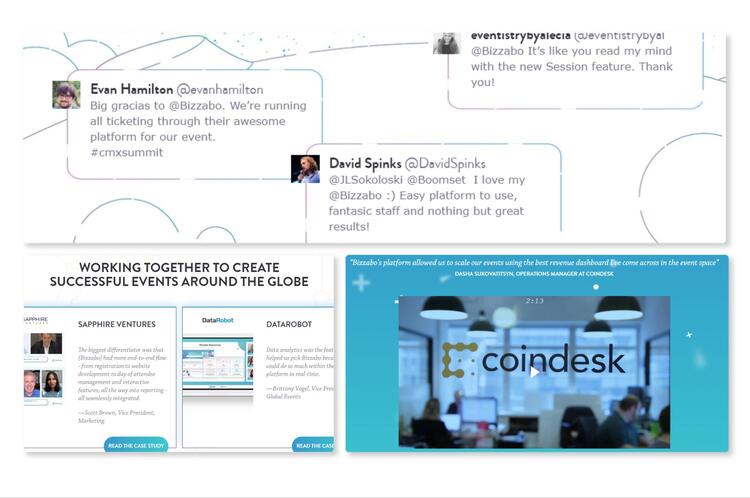
Some of the best client testimonial examples include:
1. Quote Testimonials
When you think of testimonials, you're probably picturing the traditional quote type of testimonial.
These short stories are powerful, credible, and highly effective. Particularly when you add the customer's name, company, and image.
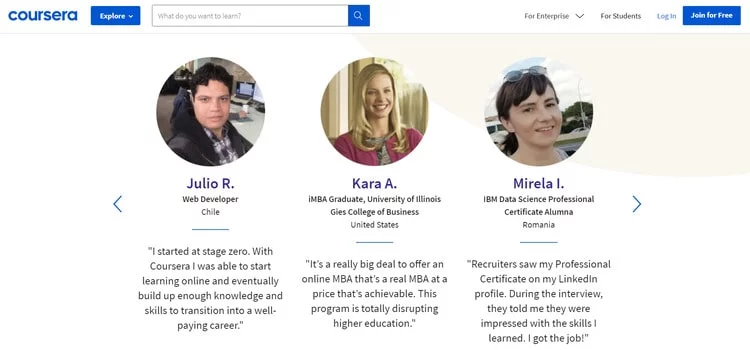
You'll often find quote testimonial examples on a website's homepage and in any of their marketing materials. Thanks to their compact size, it's easy to include a quote testimonial almost anywhere in your content without making it too distracting or 'in-your-face'.

For extra bonus features, you could even ask your customers to provide an out-of-five ranking, giving you a quantitative element that you can use in other forms of marketing.
Social media is a great place to find quote testimonial examples, and you might even find customer images that you can repurpose in your own marketing.
This type of testimonial is quick and easy, as the positive reviews have already been written and shared, so all you need is permission to share it again. The benefit of the statements already being on social media also helps prove credibility, as anyone can double-check whether the review is genuine.
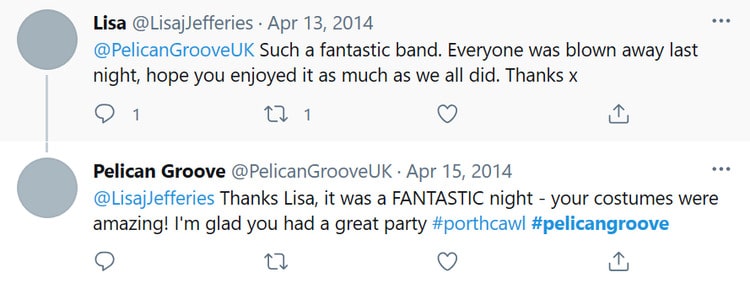
Not only is social media a brilliant place to source testimonials, but it's also a brilliant way to keep customers engaging with your brand online.
Keep an eye out for brand mentions on Instagram, Facebook, and Twitter. These organic reviews and recommendations are a great place to find authentic, genuine feedback that new customers will love.
3. Video Testimonials
Video testimonials have become one of the most persuasive marketing tools in recent years. Entertaining, visual, engaging, and hard to fake, videos can be a highly effective business tool.
Humans process video approximately 60,000 times faster than writing, and EyeWideDigital found that featuring a video on your landing page could boost conversion rates up to 80%.
Not only does a video testimonial boost conversion rates, but it also improves trustworthiness.
These days, it's not too much work to create a compelling video testimonial. The YouTube Video Builder tool is a free and easy way to get high-quality, professional-looking content that links back to your page and increases sales.
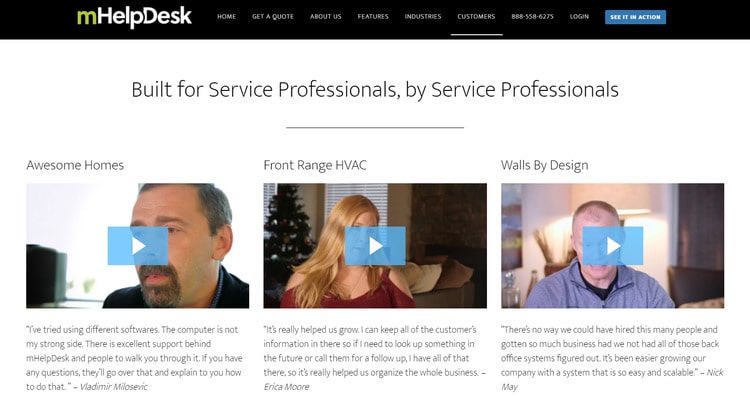
We've already established that humans are innately attracted to smiling faces (hence it's crucial to feature a picture next to any testimonial). Hearing a real person talk about your business is another excellent way to establish trust and likability.
4. Audio Testimonials
While a video testimonial is a highly effective way to build credibility while your customers tell their success story, video can feel unachievable for smaller brands due to the equipment and expenses required to create a professional video testimonial.
Audio, therefore, is a great and cost-effective way to create a compelling customer testimonial with just a microphone, recording software, and a quiet space.
You can use audio-only testimonials in a variety of ways:
- Layer them over another marketing video.
- Thread them together to tell a compelling story.
- Use them in a podcast.
You can also take quotes from these testimonials to use in written copy, with an image and link to the recording.
5. Image Testimonials
Image testimonials are particularly beneficial when you're advertising a beauty product. In this case, pictures certainly do speak louder than words!
One of our all-time favorite use of picture testimonials comes from ProActiv . Here, users share before/after photos so future customers can see the success and results that others have had using their skincare.
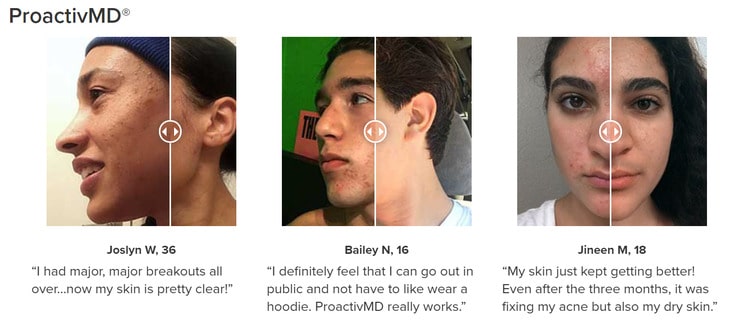
The innovative sliders are a particularly nice touch!
6. Case Studies Testimonials
Case studies are an excellent opportunity for your customers to dive deeper into previous clients' success stories. These can be a combination of written blog-style posts or even interview testimonials. Video can also be used in case study reviews.

If you're going for these more complex forms of storytelling, one of our top tips is to take snippets from the post to share elsewhere on your website and beyond. You can also highlight some of the key features that made your service truly valuable to the client in the post itself.
7. Interviews Testimonials
An interview is a great way to format a customer testimonial, especially if you / your client aren't quite sure what to say.
A great interview testimonial example will draw the reader/listener/watcher into the conversation and story. It will detail how the client came across your service, what problem you solved for them, and what happened when they bought from you (how it improved their situation).
Some good questions to ask in an interview include:
- Where you apprehensive about buying this product/service? What was holding you back?
- What happened when you bought the product/service?
- What specific features did you like the most?
- What are the top three benefits you found?
- Would you recommend us and why?
- Would you like to mention anything else?
Keep the interview open, light, and accessible, and be sure to focus on the pros of using your product/service. Building a rapport with the interviewee will also make it easier for potential customers to see you as credible and friendly: someone they would like to work with, too.

CodeAcademy is an excellent example of a company using interviews to get the full story from their students. The main page shows a video of a student being interviewed, then each thumbnail takes you to a longer, written interview about why and how that student got into coding.
8. Peer Reviews
People tend to be highly influenced by others, particularly when shopping online. This is why peer review sites such as Yelp, TripAdvisor, FourSquare, GoodReads, and many other independent review sites are so popular.
But while having people review and rate your business elsewhere might be nerve-racking, it also provides you with a fantastic source of peer quotes that you can use on your own website. Like hotel French Quarter does here:

Hearing from a peer is a highly persuasive way to get clients to see how people with problems just like theirs benefitted from your page.
These review sites are also brilliant as nobody forced your clients to submit a review or post, so they're seen as truly organic and trustworthy. What's more, only around 48% of people will use a business if they have 4 stars or less on an independent peer review site.
9. Influencer Testimonials
Getting a shout-out from an influencer, celebrity, or well-known brand all counts as an influencer testimonial example. This can be a highly beneficial and powerful example of how your business serves well-known people in your industry.
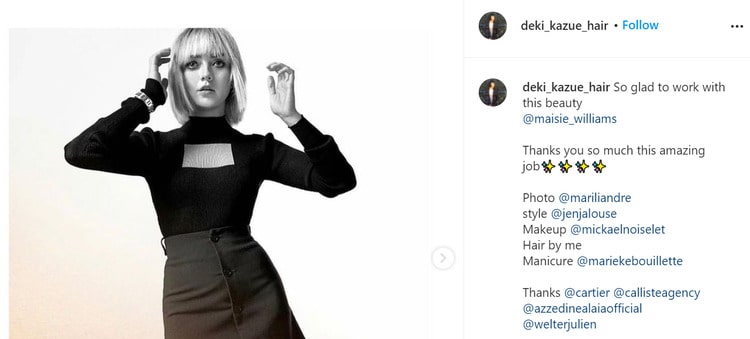
Getting influencers to share their trusted name and image with your business provides an extra layer of trustworthiness and credibility to your brand.
Getting the right influencers on-board can take a bit of commitment. The Federal Trade Commission requires any paid sponsorship or affiliate work to be clearly disclosed, so if you're paying influencers to endorse your products, you (and the influencer) must tell people that there is a financial relationship, too.
That said, if you get the right influencer involved in your business, it can provide a powerful boost to your product sales.
Not only that, but an influencer will also have many people following them. By getting in with an influencer, you too can tap into their followings and build your brand awareness.
There's a reason Nespresso uses celebs like George Clooney in their commercials!

10. Blog Testimonials
While including case studies on your own blog is an excellent way to provide detailed testimonials, asking your clients to write their own blog post about how your product or service benefitted them can be even more helpful.
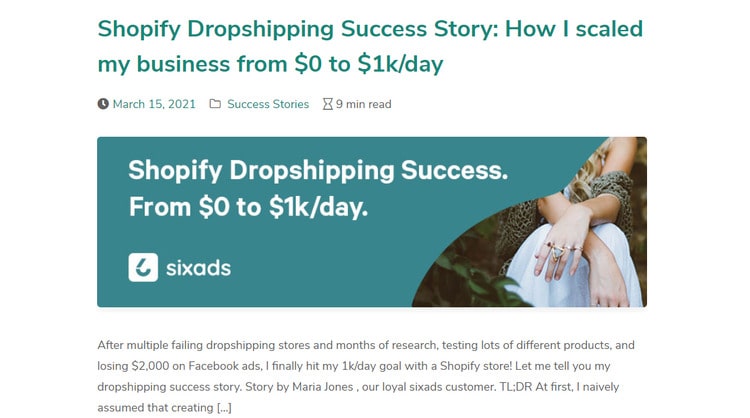
This allows your client to get their story across from their own perspective and lets readers know that nobody puts words in their mouth. It can also get more readers across to your clients' website by linking the post back to their blog or landing page.

You could even ask influencers to write a blog post for their own website that reviews your product or services, plus the tips they learned through working with you. This gets your business in front of even more readers and prospective target clients.
By letting customers know what they get when working with you and what to expect from a real customer's perspective, they can feel more confident in their decision to go ahead.
Remember that you will need to make it clear if you're paying someone to submit a review, whether this is a blog post or any other type of content on your website or theirs.
Do I need testimonials?
No matter what anyone says, testimonials always have – and always will be – a great example of how a story can increase sales.
Regardless of the type of testimonial you like to use, letting people know exactly what benefits your product or service can offer them in the words of people who are (or were) just like them is a sure-fire way to convince your target market that you're worth their time and money.
How to Write a Testimonial for a Friend
Source: https://sixads.net/blog/testimonial-examples/
0 Response to "How to Write a Testimonial for a Friend"
Post a Comment